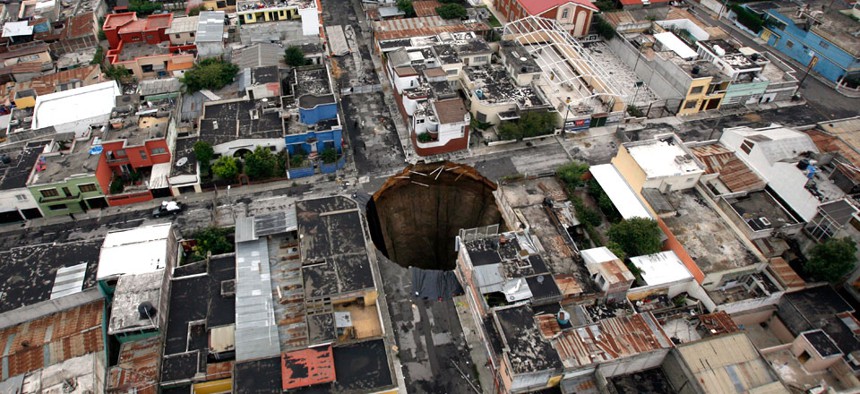Space Radar Could Predict Massive Sinkholes a Month Before They Collapse

A sinkhole covers a street intersection in downtown Guatemala City, Wednesday, June 2, 2010. Moises Castillo/AP File Photo
An early warning system could be mounted on planes or satellites to scan sinkhole prone areas.
The idea of the ground opening without warning and swallowing you up is nightmare fuel. As populations grow and humans invent new ways to plunder underground resources, sinkholes are only becoming more common—just look at the US sinkhole capital , Florida.
But America’s space agency, NASA, said today it may have developed a way to predict sinkholes up to a month before the ground collapses, saving lives and money. The early warning is provided by interferometric synthetic aperture radar (iSAR), which could be mounted on planes or satellites to scan sinkhole prone areas.
iSAR scans the ground multiple times in multiple wavelengths to put together interferograms , which can show tiny movements of the earth, including the ripples of earthquakes, the effects of flooding on riverbanks, or where the ground is sinking. This interferogram shows the ground sinking near oil wells in California:

Researchers at NASA’s Jet Propulsion Laboratory have been monitoring changing ground conditions along the US Gulf Coast as part of research into iSAR. When a nasty sinkhole formed at Bayou Corne, Louisiana , in 2012, researchers went back and examined radar scans in the same area a month and a year before the cave-in. They found that the ground surface layer had moved as much as 10 inches (26 cm) toward the sinkhole’s center. The sinkhole was caused by a company owned by Occidental Petroleum mining too closely to a geological feature called a salt dome.
The researchers say this data, published in last month’s issue of the scientific journal Geology , shows that once the technology is more widely used and deployed on satellite platforms, not just airplanes, it can be used to tell when the earth is about to transform into a gaping maw. The US and India are collaborating to launch an iSAR-equipped satellite sometime in the next seven years.
Reprinted with permission from Quartz . The original story can be found here .



